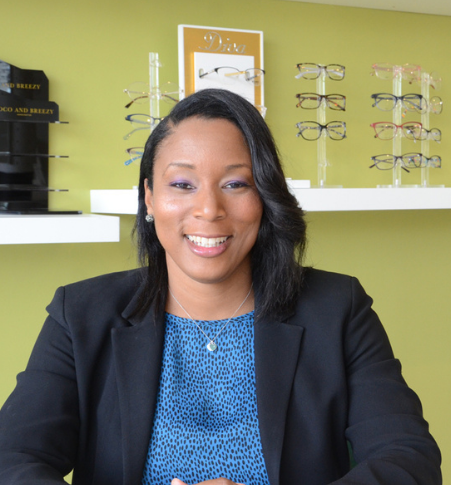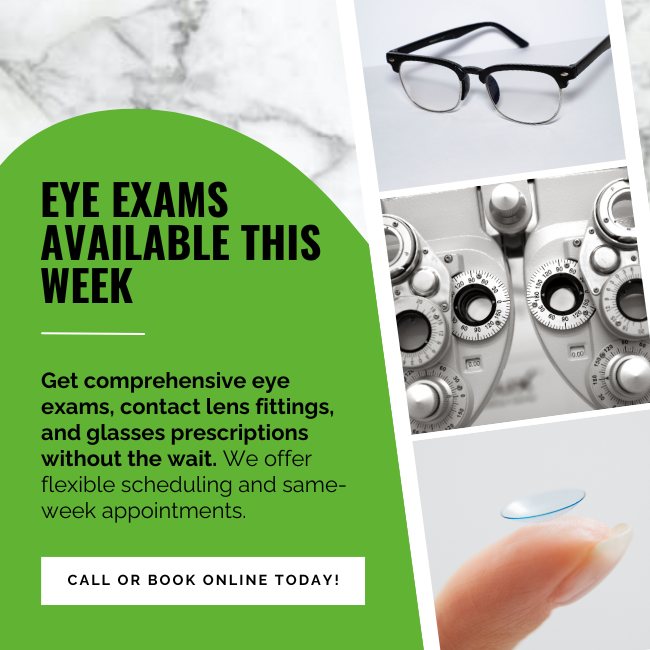Myopia is a common refractive error affecting many individuals worldwide, generally developing in early childhood. With myopia on the rise globally, early detection and diagnosis during eye exams can help manage myopia and preserve children’s long-term vision.
Myopia is not reversible, but myopia control can help slow its progression in children to reduce their risk of developing more severe eye diseases later in life.
What Is Myopia?
Myopia, also known as nearsightedness, is a refractive error that results in blurry distant vision, but near vision is clear. Myopia develops in school-aged children between 6 and 14 years and can worsen until the early twenties, when overall growth stabilizes.
Myopia occurs because the eye grows too long or the cornea (clear front part of the eye) becomes too steep. In a normal-shaped eye, when light enters the eyes, it bends (refracts) and focuses on the retina (the light-sensitive tissue at the back of the eye) to produce a clear image.
In myopia, light bends incorrectly and lands in front of the retina instead of on it, resulting in distant objects appearing blurry, while close objects remain clear.
Symptoms of myopia can include:
- Squinting
- Eye strain
- Eye fatigue
- Headaches
Myopia Risk Factors
Anyone can develop myopia. However, several factors can increase your risk, including:
- Genetics: Your risk of myopia increases if you have one or both parents who are myopic.
- Environmental: Less time spent outdoors in natural light.
- Lifestyle factors: Spending a lot of time doing close-up work (like reading) and prolonged screen time.
In children, myopia prevalence has become a growing concern, with numerous studies indicating a rise in recent years. Early detection and management of myopia can help prevent high myopia, which carries a higher risk of serious eye complications.
Myopia Progression
When myopia progresses, it can lead to high or severe myopia that goes beyond blurred distance vision. High myopia is when an individual needs −5 dioptres (D) or more of spherical correction.
High myopia can lead to severe visual impairment and sight-threatening eye diseases such as:
- Retinal detachment: High myopia can increase your risk of retinal detachment by 5 or 6 times compared to low myopia.
- Cataracts: Cataract surgery rates are higher in individuals with high myopia.
- Glaucoma: Your risk of developing glaucoma is 50% higher with moderate to high myopia compared to low myopia.
- Myopic macular degeneration: Your risk of macular degeneration is higher with high myopia.
However, there is no safe level of myopia. Myopia, to any degree, increases your risk of these eye diseases.
Why Isn’t Myopia Reversible?
Once the eye has grown, there’s no changing its shape. However, it’s easy to correct with eyeglasses or contact lenses, but these methods do not address the progression of myopia itself.
Refractive surgery, such as LASIK (laser-assisted in situ keratomileusis), reshapes the cornea to correct the refractive error, offering a longer-term correction for eligible candidates. While laser eye surgery can correct refractive errors and is available for adults, they’re not suitable for young children, nor does it prevent myopia progression.
Myopia Management & Control
New methods for managing myopia, particularly in children, are gaining attention. For instance, MiSight 1 day contact lenses are designed to correct blurry vision while slowing myopia progression when worn daily.
MiSight contact lenses use different focusing powers in different zones on the lens to signal to the eye to slow its growth. This technique allows light, including peripheral light, to focus on the retina. Focusing light in this way stops the eye from growing longer and prevents myopia from worsening.
MiSight contact lenses are FDA-approved to slow myopia progression in children ages 8 to 12 at the start of management. These soft daily disposable contact lenses are easy for children to insert and remove on their own.
Other approaches to myopia control options include atropine eye drops and environmental modifications like increasing outdoor time and taking regular breaks from doing near-focused work.

Myopia Control for Preserving Vision
While there is no way to reverse myopia once it develops, there are proactive steps and treatments available that aim to manage and slow its progression. For this reason, parents should schedule regular eye exams for their children to detect myopia early and discuss myopia control measures to protect their children’s vision from serious vision complications later.
If your child is 7 years or older and hasn’t had an eye exam in the past year, book an appointment with River City Vision Center to monitor their eye health and vision.





